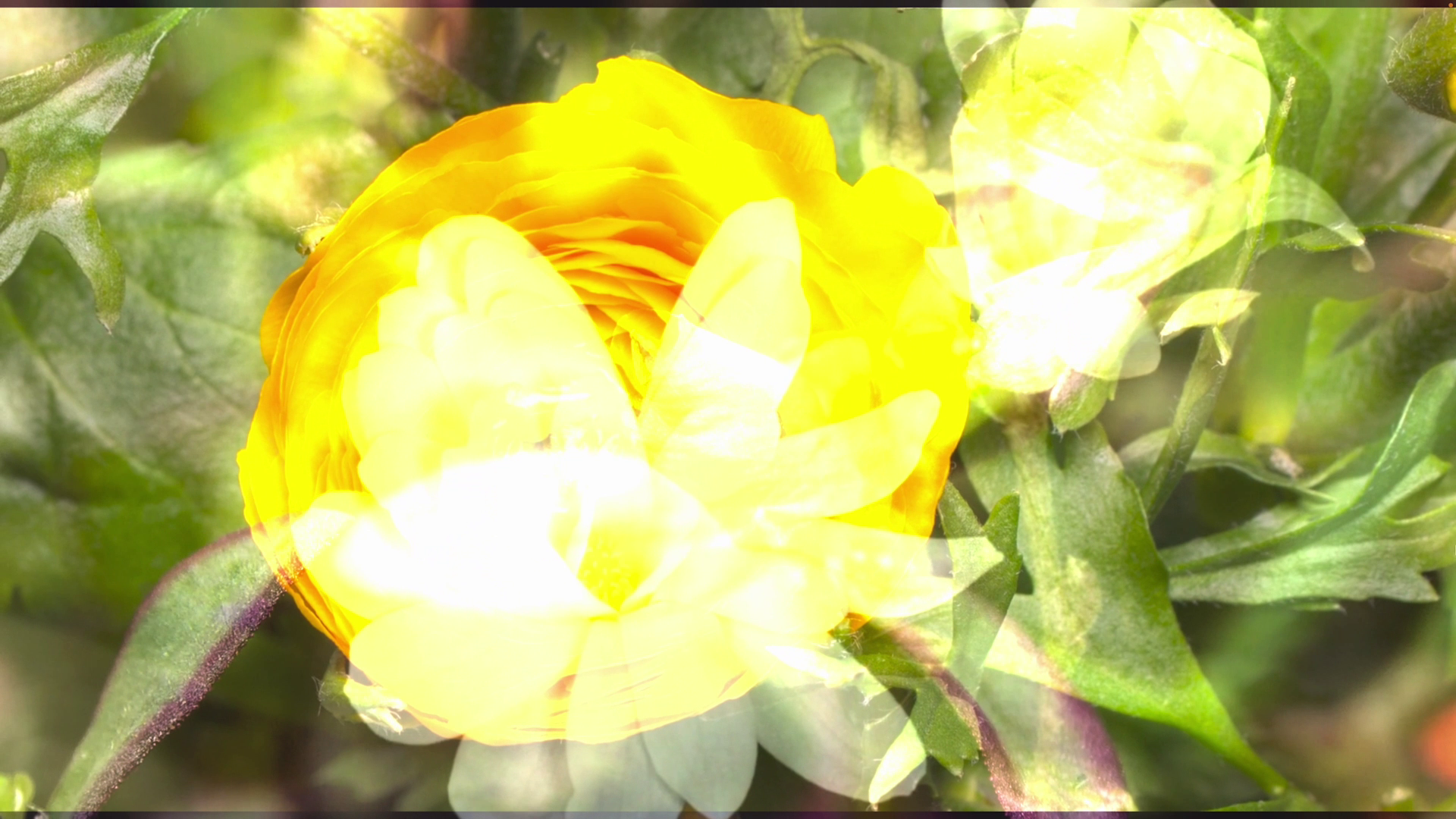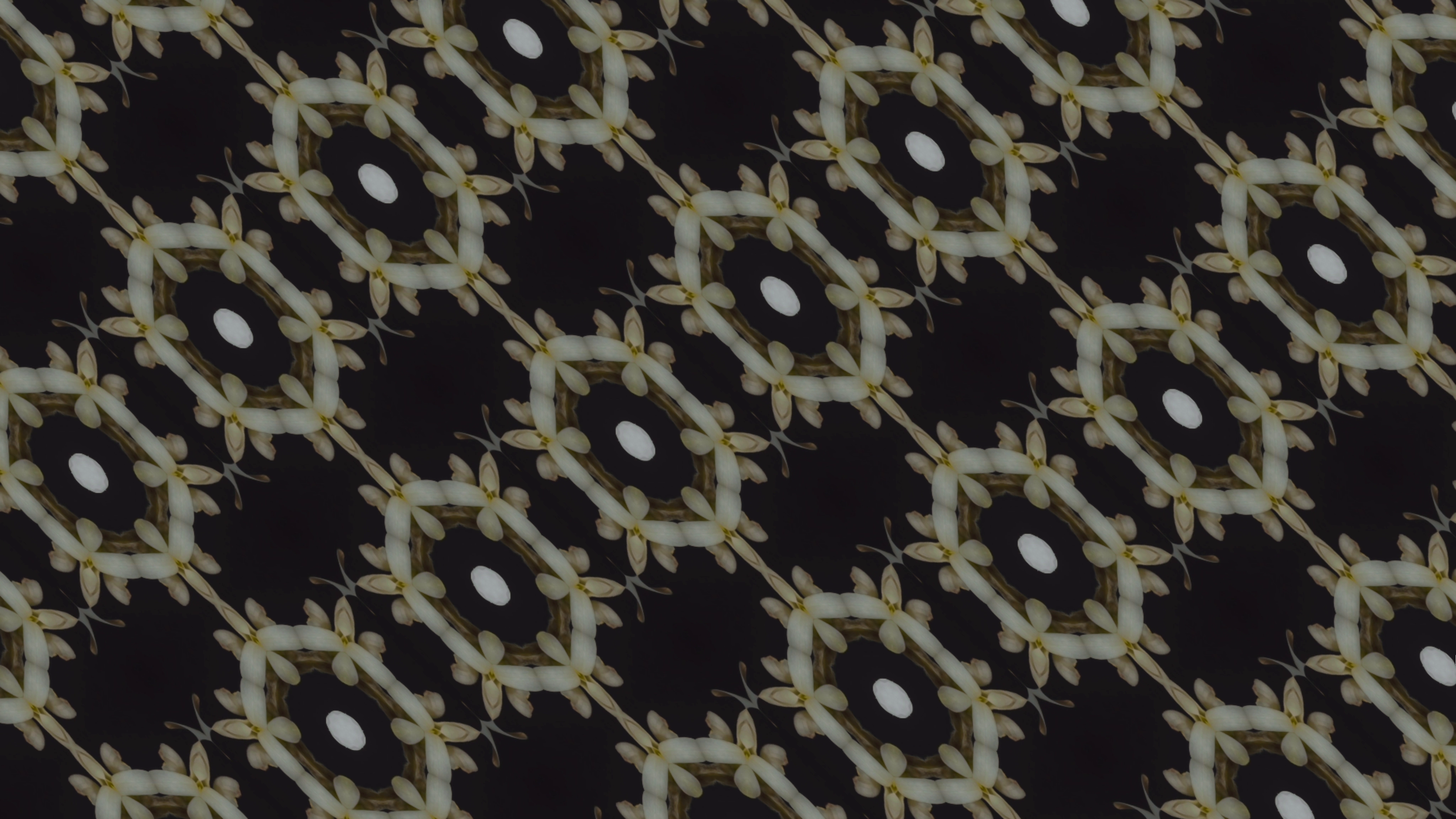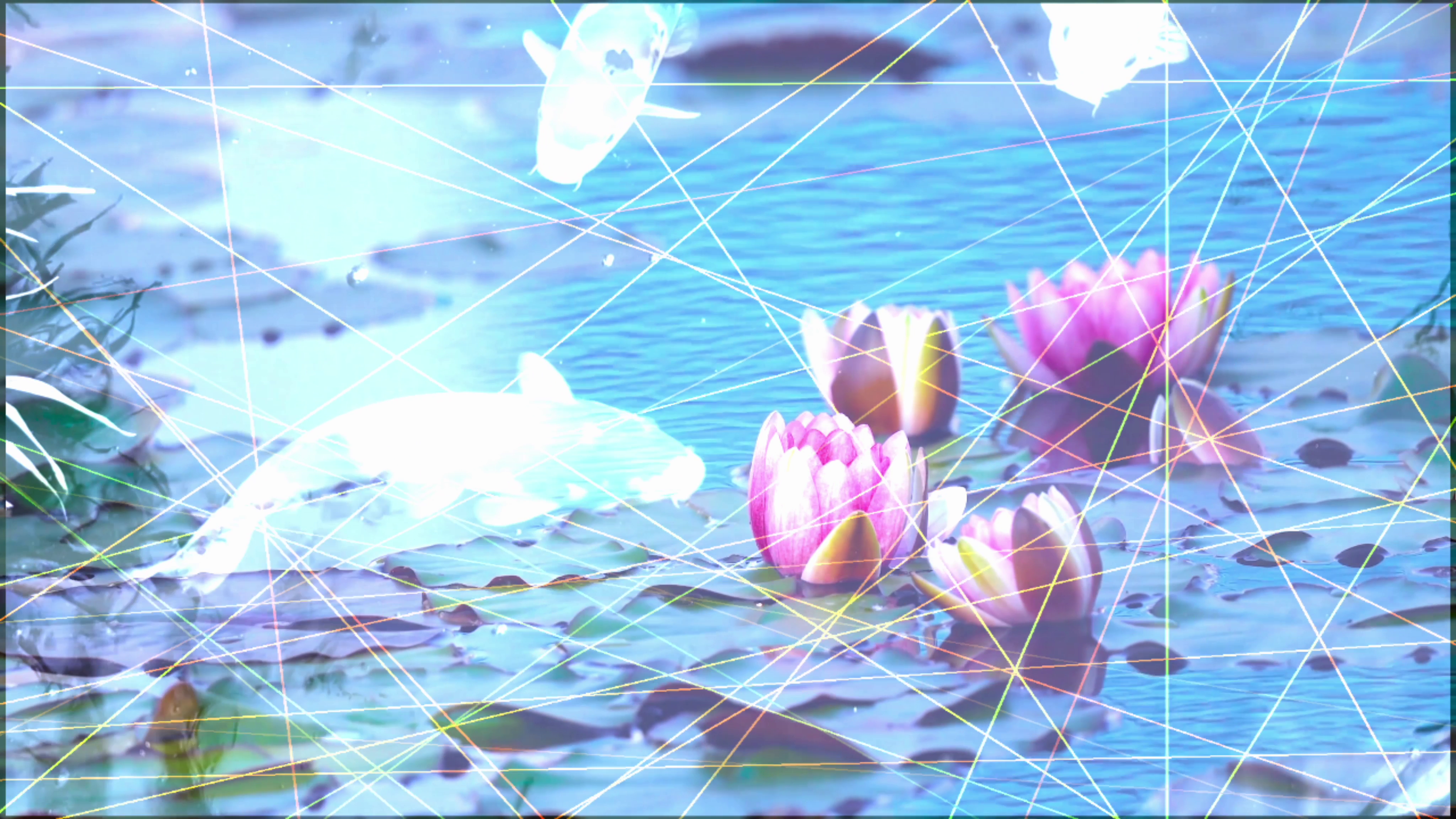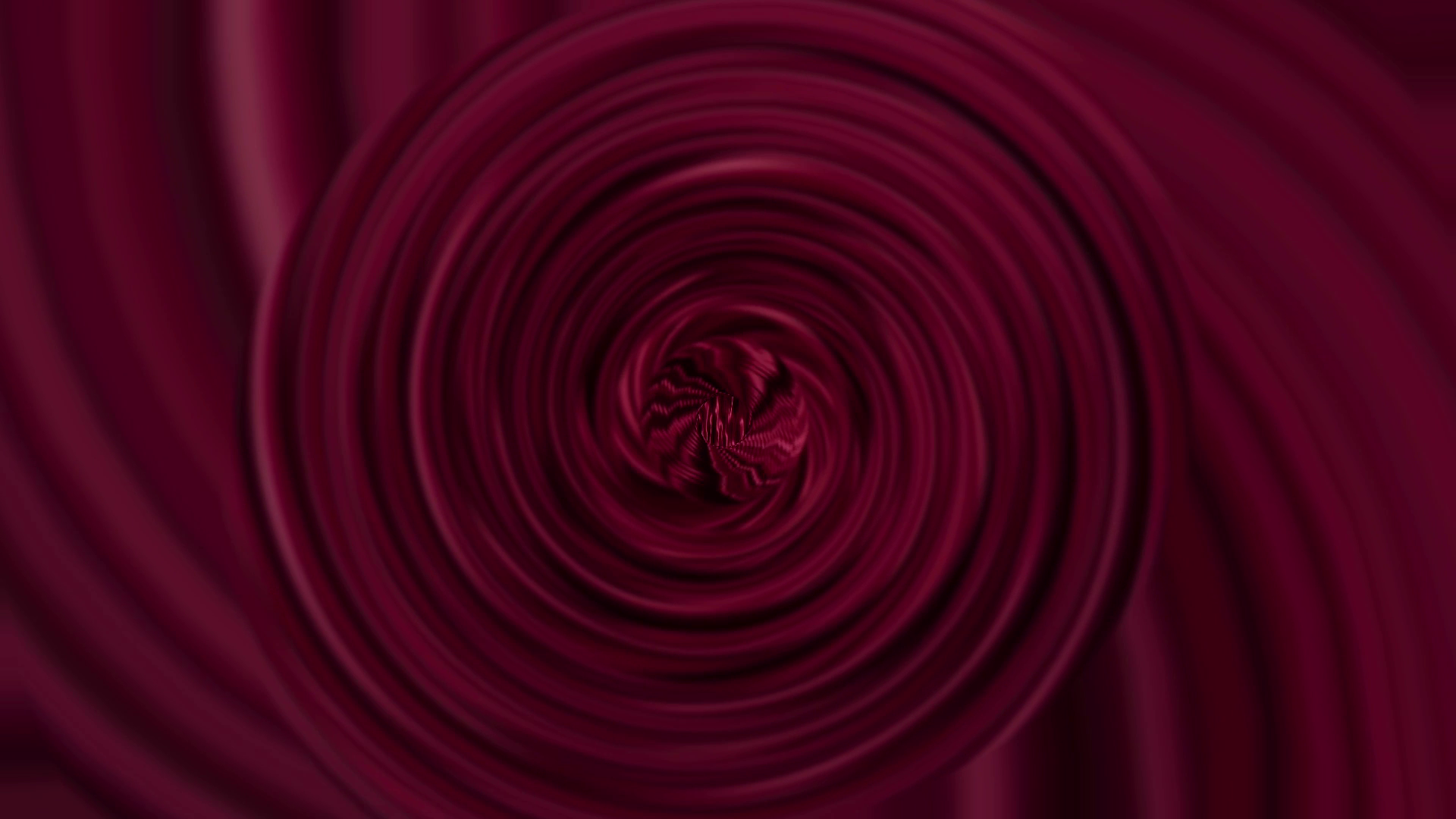






Transcript
(Intro music)
Angela: Welcome to the Digital Creator Podcast, the show where we spotlight students working on cool digital projects. I’m Angela, a consultant at the Digital Knowledge Center, where we empower students to become digital creators. Today’s guest, Jamie, learned and experimented with a live performance program to create live visuals of nature connecting to her cultural backgrounds.
Jamie: Hi, my name is Jamie, and I am a senior here at UMW and I am a studio art major with a minor in Asian studies.
Angela: All right. So, can you tell us about the project you’re working on with the DKC?
Jamie: So, the project I’m working on right now for the DKC as part of their fellowship is experimenting with the program VDMX which is this video synth live performance program.
Angela: How did you get into that? How did you learn about this project performance program?
Jamie: So, I learned about VDMX through Jason Robinson who is the digital arts professor here at Mary Washington. And during our new media class, we were experimenting with different programs and I oversaw this other student experiment with that. And I really liked the program like, especially with how that student basically showed some of their progress within that program and how they did it. I was like, “that is so fancy. I might as well try it out.” But I just didn’t have the money, so I decided to propose this idea of you know having the DKC fund the program so I can experiment – sort of experiment with the program so I don’t have to deal with issues of money. Like, so I can just create without having to spend a single cent on it. And it has really, really helped me in the long run.
Angela: So how did you first hear about the DKC in order to, you know, connect with them for this project?
Jamie: So, I’ve known the DKC for a long time since I was a first year student. I already know them through like the equipment rentals, especially with the cameras. I’ve been using those DSLR’s a lot and I’ve been really into how they provide like a lot of services on campus especially when it comes to digital knowledge. And I wanted to get more involved with the DKC, especially when it comes to how they always like introduce new ideas through provided technology and also just arts and crafts as well. So, it really helped me out as an artist.
Angela: So, could you kind of like explain what your agreement kind of looks like?
Jamie: So for me, I’m already so busy within my workload and we’ve agreed that I will – They will just cover the cost of the program so I can still use it and still come into the DKC on a non-fixed schedule. So, that has really helped me a lot. And in a way, it has also really helped me with other projects as well, but for me it’s more of like a demo. Sort of like a tech demo where I just figure out how the technology works and yeah, I would sometimes go to the DKC like once every two weeks or like multiple times in a week just to figure things out. There’s no, like, fix to anything, so I just come in and play with the material.
Angela: Gotcha. That’s really cool. So, in working with this program, how did you come up with ideas to do whatever you were working on?
Jamie: So, with VDMX it’s a very like do what you want to do program. It’s not necessarily a step-by-step process. You just basically mess around and find out until you figure out something. So for me, I was like messing with the media bins and the templates and the layers and the effects and I just play around with that until I get a really nice visual, especially with the stock footage that I’ve been using within the program as well.
Angela: I had one question about your – you mentioned you use stock photos for the program?
Jamie: Yes, I used stock videos like random natural objects like blooming flowers and cardinals and koi fish and especially with the lotus ponds. So, I’ve been using that for my work.
Angela: And why did you choose those specific stock to explore and edit?
Jamie: So for me, I really like how technology captures the natural world, especially when it comes to things that are like naturally blooming or naturally moving. And in a way, I use those objects to like sort of reinforce this sort of utopia-like imagery. And it helps me visualize that in a way that is not like that is more than just a painting that’s more than just a sculpture. For me, I think technology and how video incorporates nature into itself, it really helps me figure out like that concept of nature and technology in a more synthetic way. It’s like I guess you could say synthesis type of way. It feels a lot more positive than, say, like, oh, it’s ruining nature, but in a way, it’s like more euphoric in a type of way.
Angela: Yeah, that makes sense to me. That’s beautiful. So, in working with this program, did you face any specific challenges?
Jamie: I think the challenge for me is that sometimes with the program it’s very complicated, so I don’t know where everything is and I can’t necessarily find like the right places to have the right creative outlets, especially when it comes to the many options and the many inputs and stuff. And I think another issue that I found while using the program is definitely how like you need certain things to operate certain functions of the program, so I really didn’t experiment with a lot of things as much as I wanted to because the program is like very vast. And I can only work with so many things because it takes a lot of time to learn some of the functions as well. So yeah, definitely my plan with using VDMX is definitely using the live performance aspect a lot more because I’ve been using a lot of like single channel aspects of it. I’ve been recording some of my performances that is not actually live because I don’t have the resources yet and definitely my plan is to get a MacBook and reinstall the program in a way that I can actually use it for a live performance and actually hook it up to a monitor in a way that I can like further use the program in its livest form if you want to say that. And additionally, I would also love to use it for my art practice since I talk a lot about being Vietnamese American, especially in the context of found footage. I think this program works great with that and I really want to continue using that for those purposes.
Angela: So, through this project what is one thing that you’ve learned about yourself or learned about like your creative style?
Jamie: So for me, like especially using video synth, it has helped me a lot when getting comfortable with like a lot of different things, especially when it comes to how I view video now because I didn’t really think that there would be programs that use algorithms, especially with synths in a way that I don’t have to control every single thing like I usually do on premiere pro. And VDMX has really taught me how to use a lot of like random effects and I really like that. And it taught me the functions of how video synth works because video synth has existed since the 1970s and I always wonder how it necessarily works and through this program I sort of got a little bit of a clue on how it might function. So, I really, really appreciate how I learned, like how certain effects work on each other and how certain layers work on each other because it’s not the same as, say, 2 layers in a video editor. This is completely different because it’s like you can be destructive with it. Absolutely destructive with it because you can’t control everything and that’s what I like about these sort of programs.
Angela: So, at what point would you say you are in the project, would you say like you’re in the middle, toward the end?
Jamie: So for me, I wouldn’t say it’s like a full-blown single project. For me, it’s more of like me experimenting with different things because that’s what artists do, especially video artists. They experiment with things that they’re not necessarily familiar with, and then they just work that into a final project too. So for me, I’ve been making like 6 tiny videos of me experimenting with different things and how they work with one another rather than say, oh I have to plan this, I have to propose this, I have to figure out a schedule with this because like, I feel like that sort of just stresses me out when it comes to how I create my work. And for now, I just wanted to just make these little videos as pockets of inspiration rather than like a full-blown project because I’m already doing that for my senior thesis for my major.
Angela: What is the most rewarding thing about creating these videos?
Jamie: So definitely the most rewarding is definitely seeing the final product once you edited everything and recorded the actual performance on the program. And for me, it’s just like oh wow, I can see the whole thing now and it just looks really amazing, even if it’s a little bit shorter than what I expected like duration wise. I think it’s like a really nice idea that came out of my head and it definitely feels like a thumbnail sketch that I would do in my sketchbook, but it’s through a program. And I think that’s really amazing for me. And plus, I usually post these videos on my Instagram and people really, really like seeing those pockets of inspiration that I’ve put out on the Internet.
Angela: Would you recommend that students either partner with the DKC like you did, or become a fellow with the DKC?
Jamie: Yeah, absolutely. The DKC is such an amazing place where you get to express your ideas and propose your ideas. And they have a lot of resources that you can use from the DKC, especially when it comes to getting video software or even like recording equipment because I use that a lot in my own practice when I do video art. And it’s, in a way, it helps you a lot, especially when it comes to funding because VDMX is like $100, so I just couldn’t afford it. And the DKC has helped me a lot with that, so I can actually get to the creating part rather than worry about, Oh my gosh, I can’t afford that. I am too broke for this because I just can’t afford it. And I’m so glad that the DKC has really funded my project because I get to explore something that I really haven’t explored through other video software such as Premiere Pro or even like other recording softwares such as Audacity. So, it has really helped me a lot when it comes to branching out my creativity.
Angela: I love the DKC as well, and I feel like, you know, it’s really underutilized in my opinion. So, I would love if more people could partner because they can learn new tools or, you know, get funding like you did to learn more. Is there anything else you want to dive into deeper about your project?
Jamie: I will say, my videos come from a place of contemplation, especially connecting that to my cultural roots of being Vietnamese and also growing up as someone who is Buddhist and also believes in the folk religion there. And I often use a lot of that into my projects. So, I think that technology synthesis and connecting that to my own culture and my own religious beliefs have really helped me a lot.
(Outro music comes in and fades out)
Angela: This has been the Digital Creator Podcast. You can find a transcript of our conversation and more about this project below. This podcast was produced by me, Angela Payne, with help from the resources at the Digital Knowledge Center. Are you interested in becoming a digital creator? Do you have a cool project you want to share? Go to dkc.umw.edu for information on how to get started. Thank you for listening!
(Outro music fades back in)
For information on how to apply for a fellowship visit the DKC site.
Reply